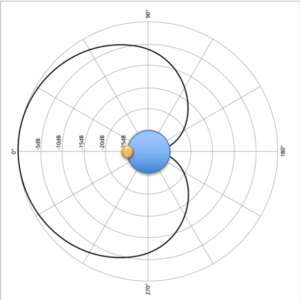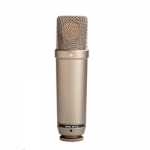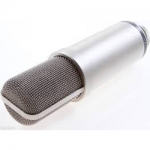The Best Microphone For Voice Over – A Complete Review
By: Gravy for the Brain
From: Gravy for the Brain
This Gravy For The Brain post reviews to find the best microphone for voice over work based on different budgets. In this review, we cover a range of voiceover microphones that are suitable for beginners, intermediates and advanced voiceover artists.
A List of Voiceover Equipment
The list below is just a quick guide to help you understand what you need to record a good voiceover. The reason for including this is to help you put together a budget that is right for you. This setup gives you a good basic start to recording your voice and producing showreels.
If you are totally new to voiceover you need to determine first if you have a voice that is suitable for the voiceover industry.
- Voiceover Microphone: a microphone is required to capture the sound of your voice. The quality of your microphone will have a large impact on the overall quality of your recordings.
- Headphones: you need to be able to hear yourself without interfering with the microphone (feedback) , so headphones are essential.
- Microphone Stand: having a mic stand improves your recordings by reducing movement and knocks so you get a better quality recording.
- Shock Mount: the shock mount suspends the microphone and helps reduce unwanted vibrations and rumbling.
- Pop filters: the pop filter reduces the plosive and sibilant sounds that the mouth makes (“P” sounds pop and “S” sounds hiss).
- An Audio Interface to connect your mic to your computer.
The Best Microphone For Voice Over – The Types of Voiceover Mics
The first thing to understand is the different types of microphones used in voice work.
- USB Microphones: this type of mic plugs directly into your computer’s USB port and captures above-average sound. It’s ideal for low-budget podcasting and entry-level voice-over work.
- Dynamic Microphone: these are used for radio broadcasting. They have a warm sound and do not have a high level of detail in the upper frequencies.
- Large Diaphragm Condenser Microphone: these mics are often used in studios to record voiceovers and have very detailed and lively sounding middle and upper frequencies.
What is Phantom Power?
Phantom power mics need a little electrical power to work to convert the tiny signals picked up by the condenser into something usable by an audio interface or pre-amp. This electrical power is called “phantom power.” It’s a feature that’s commonly found on computer audio interfaces. Using phantom power isn’t complicated, and you shouldn’t be intimidated by it.
Why use a USB microphone?
USB microphone pros:
- A USB microphone connects to a computer through a standard USB port.
- You can record directly into a computer without the need for additional equipment.
- They’re relatively affordable.
USB microphone cons:
- While it’s possible for a computer to recognize more than one USB microphone at a time, setting it up can be potentially difficult.
- Most USB microphones are dependent on a computer for operation, so they’re not as versatile as regular microphones.
- If your ultimate goal is to record the best-sounding voice-over possible, you’re going to need to use a different kind of microphone. Most USB mic’s that we’ve tested do not come up to par for professional voice recording.
What are the pros and cons of Dynamic Mics?
Dynamic Mic Pros:
- They are more forgiving when it comes to plosive sounds (the “P” sounds that pop and the “S” sounds that hiss), and thus are a little easier to work with, compared to Large Diaphragm Condenser mics.
- They don’t require phantom power to operate.
- They are very robust and great for live/stage use.
- They take an input of a huge dynamic range
Dynamic Broadcast Voice over Mic Cons:
- They often lack a little detail in the upper mids and high frequencies.
- They require additional equipment to use them with a computer.
- They do not capture the subtleties needed for dialogue recording
- Not recommended for studio voice recording
What are the pros and cons of Large Diaphragm Condenser Voice over Mics?
Large Diaphragm Condenser Pros:
- These mics have a very detailed response, as well as lively sounding upper frequencies.
- You can capture the highest quality of sound using one of these mics, especially the subtleties of the human voice.
- Recommended for Voice Recording
Large Diaphragm Condenser Cons:
- They will pick up on unwanted plosive and vibration noises and require a pop-shield
- Additional equipment is required to use them with a computer – your audio interface or pre-amp.
- They require phantom power to operate, although this isn’t really a con – but you need to ensure your audio interface will supply phantom power.
The Best Microphone For Voice Over – What are Polar Patterns?
Each microphone is different in its design and sound, but all follow a set of rules about how the actual sound is picked up by the microphone, and more crucially, where the sound is picked up. These rules are called the polar patterns of the microphone. There are:
- Omni-directional (picks up all the way around the mic)
- Bi-directional (picks up from the front and back of the mic – good for recording 2 people)
- Sub-cardioid (picks up all from the front and half from the back)
- Cardioid (essentially just picks up from the front)
- Hypercardioid and Supercardioid (pick up from the front and narrow ranges from the back)
- Shotgun (generally used for distance recording, have a very narrow, acute pickup point that is super-directional)
The most common (and really the only one a voice artist needs to be aware of) is cardioid.
As you can see from the diagram (that’s a plan view looking at the top of the mic), the cardioid pattern only picks up from the front of the mic. Ideally, at 30′ off axis you will not get plosives but still pick up 100% of your dialogue. Some mics like the Neumann U87 have switchable polar patterns – you need to ensure that your mic has at least the cardioid pattern to be useful.
FREE EBOOK and MINI COURSE
Download Our FREE EBOOK on how to create your own voiceover business and take our FREE mini course. Start using your natural talent to earn money.
What are Pads?
Pads are essentially switches which reduce the level of the input sound and ‘dampen’ the sound down. This is not relevant for voice artists and is only really useful for very loud inputs, such as miking up guitar amplifiers. Again, some mics have pad switches on, some do not.
The Difference Between Jack & XLR Connectors
All mics that require phantom power will be connected via XLR cable, which is a 3-pin cable. These cables provide the phantom power needed to make the mic work, but are also balanced. You can get a complete description of balanced audio here, suffice to say that using balanced cables (XLR cables) gives a better sound quality as it contains a system of eliminating noise picked up by the cable itself. You should use balanced cables wherever you can in your system.
Jack cables are the more common cable you’ll see and aren’t really used with professional voiceover mics. If you have a mic that only has a jack cable on it – time to keep searching.
What To Consider When Choosing Which Is Best Microphone For Voice Over
The best voice over microphone is the one that you can use with the fewest technical problems. Remember to think about your own unique voice and the type of voiceover work you are aiming to do. To give you an idea female vocals will probably want to choose from voiceover mics with a wider dynamic range. Other microphones are designed to pick up lower frequencies such as a deep male voice. Most though, have a relatively flat response and are suitable for both
Some idea of fundamental frequency ranges in voices:
- male voice usually falls between 110-120 hertz
- female voice usually falls between 200-210 hertz
- voices usually fall between 300-400 hertz
The best voiceover mic for your voice won’t necessarily be the most expensive one on the market. You need though to set a budget and then select from within that budget. We have listed out below voiceover mics based on some price ranges.
The Range Of Voiceover Mics
(in no order of preference)
#1 – Sennheiser MK4 ($280/£205)
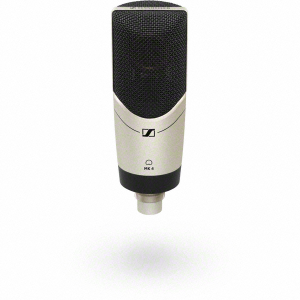 The Sennheiser MK4 is our top recommendation for any working voice artist. It’s a little known fact that Sennheiser actually own the Neumann company, and the MK4 diaphragm capsule was designed by the same team who built the Neumann U87. It’s a cardioid only mic with no pad, but sounds wonderful with both male and female voices. Compared to the other mics in this price category, this easily wins on performance and sound quality, whilst being robust and of a solid build. This is the best value mic in the range and is the reason that we sell only this mic in our store
The Sennheiser MK4 is our top recommendation for any working voice artist. It’s a little known fact that Sennheiser actually own the Neumann company, and the MK4 diaphragm capsule was designed by the same team who built the Neumann U87. It’s a cardioid only mic with no pad, but sounds wonderful with both male and female voices. Compared to the other mics in this price category, this easily wins on performance and sound quality, whilst being robust and of a solid build. This is the best value mic in the range and is the reason that we sell only this mic in our store
The Rode NT1 is a perfect first time voiceover mic. The Rode NT1 gives you a no ring resonance and similar frequency response to other voice talent microphones. Quiet and neutral sounding, it creates high-quality recordings with a wide dynamic range.
#3 – sE Electronics sE2200a II C ($299) 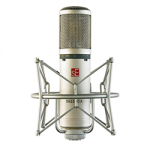
The sE2200a II C gives you an excellent quality and up-front sound. It is a versatile condenser mic which is ideal choice for first time voiceover actors. It’s highpass filter and 10dB pad give you advanced sound-shaping options and extremely low self-noise and high SPL handling provides you with an extended dynamic range.
#4 – Lewitt LCT 440 Pure C (£245) 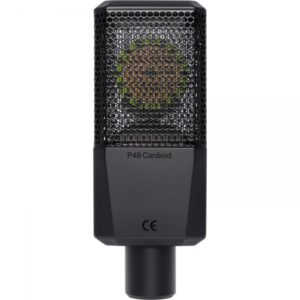
[13:30, 12/19/2017] Hugh Edwards: The LCT 440 Pure is a new and excellent addition to the VO mic market. A large diaphragm cardioid condenser mic, the LC 440 Pure features a truly stress-free design with its open front, magnetic pop-shield and included shock mount. In our own tests, we found it produces a clear and crisp sound through it’s 1″ condenser capsule and at it’s low cost, it’s hard to find another mic of such versatility that hits these low noise-floor, high-fidelity for the money.
#5 – Shure SM7B ($349) 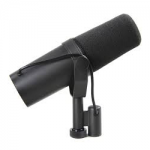
The SM7B is a cardioid dynamic microphone that is popular both in radio and sound studios. The basic sound of the SM7B is exceptionally clear, while still retaining presence and warmth. Its frequency response is very broad and can be switched if necessary. For increased presence, one only has to switch on the high-boost. The SM7B is ideal for use in a home studio. The integrated swing-mount makes precise and stable positioning possible.
#6 – Audio-Technica AT4033 ($399) 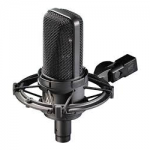
The Audio-Technica AT4033 offers results in exceptional transient response and clean output signals. A studio favourite, the AT4033 cardioid microphone has a 80Hz high-pass filter, this easily switches between flat frequency response and a low-end roll-off that diminishes ambient noise and popping with close vocals.
#7 – Sennheiser MD431 II ($449) 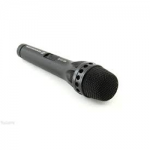
This is one of Sennheiser’s most popular microphones and fits to a good mid bracket price point. The MD 421 II’s full-bodied cardioid pattern and five-position bass control means you can use the MD 421 II in close-miking situations and still get clean, clear response with no unnatural bass boost. It’s great choice for broadcast and VO work. Excellent feedback rejection and sound qualities enable it to cope with the most diverse recording conditions and broadcasting applications.
The Rode NTK is one of the best microphones out for voiceover artists. It is ruggedly built, and gives you a warm and clear sound. It features a large 1″ diaphragm (gold plated), class A circuitry and a wide frequency range that’ll pick up a range of voices. You also get the necessary XLR cables so out of the box you are ready to record those vocals of yours. It’s well built and sounds amazing. If you can afford it, this is one of the best out there.
#9 – Audio Technica 4047 ($699) 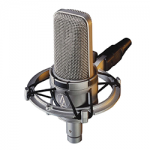
The Audio Technica is one of the range of voiceover mics that is designed for a range of uses. The transformer-coupled output and specially-tuned element provide sonic characteristics reminiscent of early F.E.T. studio microphone designs. It has exceptionally low self-noise, wide dynamic range and high SPL capability. The body has a precision-machined, nickel-plated brass, acoustic element which provides enhanced stability and optimal sensitivity.
#10 – Miktek C7 ($899) 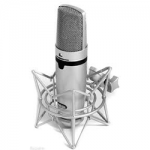
Amazing vocal microphone! The C7 is an ear-pleasing large-diaphragm FET condenser microphone — the sort of mic you can put up, turn up, and call it a day. Plus, thanks to the three selectable pickup patterns, the C7 is as versatile as it is sweet sounding. It features cardioid, omni, and bidirectional pickup patterns — each convenient. You’ll love being able to use the bidirectional pattern to capture two sources, making it great for interviews and general VO.
#11 – Blue Microphones Dragonfly 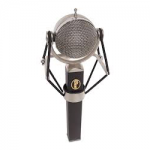
The Dragonfly is one of Blue’s most affordable mics. It provides a sweet sound like that of the vintage Neumann and AKG mics heard on thousands of recordings. It puts its own distinctive signature on the sound. The ability to position the capsule at so many angles relative to a sound source opens up a world of sonic opportunity for the VO artist.
#12 – Neuman TLM 103 ($1,099) 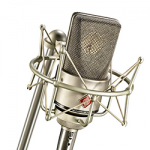
The TLM 103 is the ideal large-diaphragm microphone for anyone who wants a high quality professional mic. It functions with a transformerless circuit of the type that provides a low self-noise level and the widest dynamic range. The cardioid polar pattern capsule is particularly well-tuned for acoustic balance and good phase cancellation for sounds from the rear.
#13 – AKG 414 ($1100)
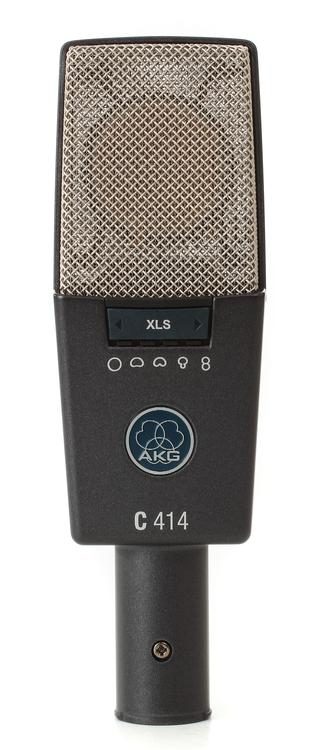 The AKG is a fantastic quality microphone and has a brilliant pickup range with a nice, flat frequency response. At the price it’s a mid-range microphone, but it’s a completely professional, robust mic. It has switchable polar patterns and a pad setting. This would definitely be a great choice for any working voice artist.
The AKG is a fantastic quality microphone and has a brilliant pickup range with a nice, flat frequency response. At the price it’s a mid-range microphone, but it’s a completely professional, robust mic. It has switchable polar patterns and a pad setting. This would definitely be a great choice for any working voice artist.
#14 -Microphone Blue Yeti Pro ($249.00)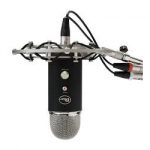
The Blue Yeti is a USB microphone that is ideal if you are just starting out on your voiceover career and budget minded. The Yeti come in 2 versions.. the Yeti and the Yeti Pro, the difference is that the Pro has a higher bit recording and the ability to use XLR.
#15 – Neumann U87 ($3180/£2500)
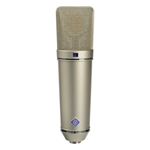
The U87 is the standard workhorse of the majority of professional recording studios in the world. It’s long had a reputation as one of the very best voice recording mics on the market and is reflected in it’s build quality, it’s performance and it’s price tag. This is an exceptional microphone with switchable polar patterns and a pad, a flat response and works well for both female and male voices. This mic is definitely recommended if you have money to burn, but the Sennheiser MK4 is a great alternative for a tenth of the price.
#16 – Sennheiser MKH 416 (Circa $700/£550)
The 416 is one of the most commonly found VO mics in the world. It’s a
 hypercardioid microphone (not a standard cardioid pattern mic) and because of this you have to be careful with being on axis whilst using it. For this reason, the 416 tends not to be used for character work, where the voice artists are more expressive and move more. The 416 was not originally designed for voice work, rather for capturing audio far away,hence it’s design; but a curious thing happens when you position yourself right in front of one instead of 8 feet away – you get an awesome, punchy commercial sound. This coupled with the fact that the 416 is extremely rugged and durable (you can throw it in a suitcase and traqvel with it without any worries, making it the go-to travel mic), and you have a winning mic used the world over and sworn as the best, by many VO’s. Most professional VO’s who have a 416 also have a good large diaphragm condender mic too, to cover all eventualities.
hypercardioid microphone (not a standard cardioid pattern mic) and because of this you have to be careful with being on axis whilst using it. For this reason, the 416 tends not to be used for character work, where the voice artists are more expressive and move more. The 416 was not originally designed for voice work, rather for capturing audio far away,hence it’s design; but a curious thing happens when you position yourself right in front of one instead of 8 feet away – you get an awesome, punchy commercial sound. This coupled with the fact that the 416 is extremely rugged and durable (you can throw it in a suitcase and traqvel with it without any worries, making it the go-to travel mic), and you have a winning mic used the world over and sworn as the best, by many VO’s. Most professional VO’s who have a 416 also have a good large diaphragm condender mic too, to cover all eventualities.
Summary of Voiceover Mics
When you are looking to choose the best microphone for voice over work, the first place to start is to identify your budget. Then decide on the range of microphone you want. The ones we have listed here are well recognised in the industry for their quality. If you have any others voiceover microphones that should be listed in this list of the best best microphone for voice over work, then please leave a comment. To find out more about microphones and how to setup your own studio take a look at the voice over classes that we provide as part of our membership plan.
[V1.3 Updated on 18th October 2022]

